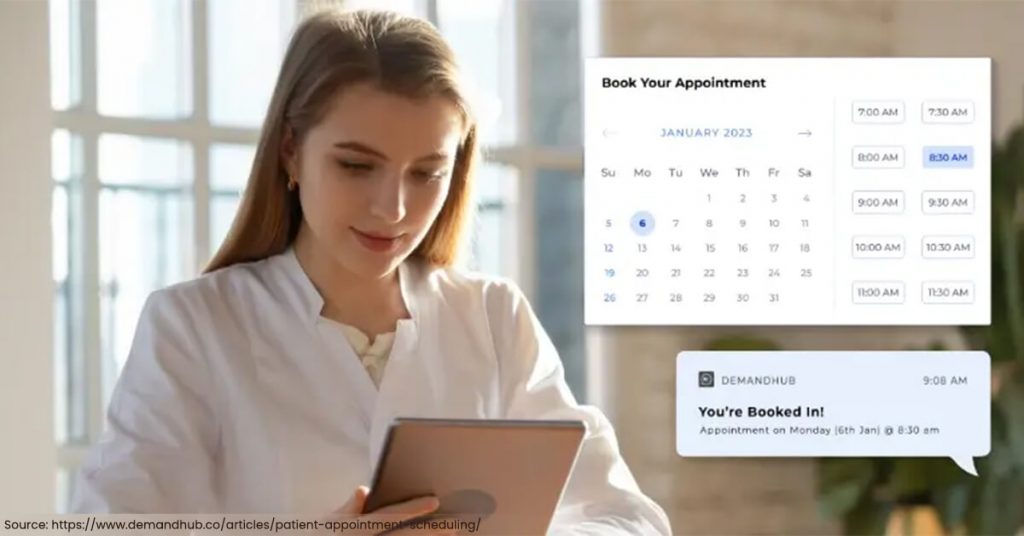Rural communities have worse health results compared to cities. People in rural areas of states like Texas often die from heart disease, stroke, cancer, and lung problems more than others. Several problems cause this:
- Limited Access to Healthcare Providers: Many rural clinics find it hard to hire and keep specialized doctors and nurses.
- Geographic Isolation: Patients often must travel far to get healthcare.
- Limited Infrastructure: Slow or no internet makes it hard to use telehealth services.
- Chronic Disease Burden: Long-lasting health problems like diabetes, high blood pressure, and heart failure are common and hard to manage without the right tools.
- Financial Pressures: Fewer patients and limited Medicare payments make it tough for clinics to stay open.
These problems make running rural clinics more expensive and reduce how much money they can make. Smaller clinics and community health centers struggle to keep providing care.
Medicare Reimbursement and Policy Updates in 2024
A big change for rural healthcare came with the 2024 Medicare Physician Fee Schedule update. This lets Rural Health Centers (RHCs) and Federally Qualified Health Centers (FQHCs) get paid for telehealth and remote patient monitoring (RPM) services. Before, these payments were limited or not allowed.
This update makes it easier for rural clinics to invest in AI-driven telehealth and RPM tools. Getting money for these services helps clinics buy needed technology and improve care and office work. More patients in rural areas can now access steady and good care, and clinics earn more money.
AI Answering Service for Pulmonology On-Call Needs
SimboDIYAS automates after-hours patient on-call alerts so pulmonologists can focus on critical interventions.
Financial Benefits of AI-Enabled Remote Patient Monitoring (RPM)
AI-powered RPM lets doctors watch patients’ health data from far away. They can act faster if problems come up. This lowers emergency room visits and hospital stays, which cost a lot.
RPM sends reminders for medicine and vital sign checks. This helps patients control chronic diseases from home.
Here are some examples from rural clinics using RPM:
- Greenville Healthcare Associates in Texas saw better patient health and more involvement after using AI RPM. The manager, Nadia Ziyadeh-Hammad, said patients followed care plans better, leading to improved health.
- A Texas rural doctor said remote monitoring helped doctors feel less alone. It let them stay connected with city centers while working far away.
Some RPM devices use cellular signals instead of internet, so patients without good internet can still use them. This solves a major problem in rural areas.
By reducing hospital visits, AI RPM helps clinics and patients save money. The cost of the AI system is balanced by lower healthcare expenses and fewer missed appointments.
AI Answering Service Uses Machine Learning to Predict Call Urgency
SimboDIYAS learns from past data to flag high-risk callers before you pick up.
AI and Workflow Automation: Transforming Rural Healthcare Administration
AI is changing daily work at rural healthcare centers. It helps with phone systems and billing tasks, letting staff spend more time on patient care.
- Front-office Phone Automation: Companies like Simbo AI use AI to answer calls and contact patients. These systems handle appointment scheduling, medicine reminders, and calls or texts 24/7, without staff needing to answer every call. This lowers missed calls and office work.
- Revenue-Cycle Management (RCM): About 46% of hospitals in the U.S. use AI tools for billing and coding. These tools can make staff work faster and reduce errors. Some rural hospitals saw coder work increase by more than 40%, fewer unpaid bills, and fewer denied prior authorizations.
- Insurance and Claims Automation: Banner Health uses AI bots to check insurance and help with denied claims. This saves staff time and boosts the success of claims.
These AI tools reduce mistakes, cut costs, and improve cash flow by lowering claim denials and speeding payments. For rural centers with fewer staff or billing knowledge, AI helps manage money well without needing extra workers.
Night Calls Simplified with AI Answering Service for Infectious Disease Specialists
SimboDIYAS fields patient on-call requests and alerts, cutting interruption fatigue for physicians.
Patient Engagement and Adherence Supported by AI Virtual Health Assistants
Rural patients often feel apart because of distance and fewer clinic visits. AI virtual health assistants help by giving 24/7 support. They remind patients about medicine and appointments, answer basic health questions, and send health information by phone or text.
Using these assistants helps patients stick to their care plans. This leads to better health, fewer missed visits, and fewer emergency trips. These improvements also help rural clinics avoid financial problems.
Addressing Transportation Barriers with Telehealth
AI telehealth cuts the need for patients to travel long distances for regular checkups or monitoring. Many rural people don’t have cars or face expensive travel.
Remote monitoring, online visits, and automated contacts bring care to patients’ homes. This improves health and lowers no-shows and last-minute cancellations, which can hurt clinic income.
Case Studies and Practical Outcomes
Many rural clinics show real improvements using AI telehealth:
- Greenville Healthcare Associates saw better patient compliance and health with AI RPM.
- Auburn Community Hospital had a 40% boost in coder work and fewer unpaid bills with AI billing tools.
- A community health network in Fresno, California cut denied claims by 22% and service denials by 18% using AI claim checks, saving staff 30 to 35 hours weekly.
These cases prove that small or low-resource rural clinics can improve how they work and save money using AI tools, if they get good training and help.
Addressing Infrastructure and Ethical Challenges in Rural AI Adoption
Even with benefits, adopting AI telehealth in rural areas has challenges:
- Infrastructure Limitations: Internet and cellular signals are uneven in rural places. Some RPM devices use cellular networks and not broadband, but better connectivity is still needed for full telehealth use.
- Ethical and Data Safety Concerns: Privacy, consent, and bias in AI systems must be watched carefully. Laws and rules should guide safe use.
- Workforce Training: Rural healthcare workers need training to use AI systems well and fit them into daily work.
Experts say that cooperation between policymakers, healthcare workers, and tech experts is important to fix these issues. More research on how AI works in real rural health settings is also needed.
Financial Impact Summary for Rural Healthcare Administrators
For those managing rural clinics, AI telehealth solutions offer various money benefits:
- New Medicare Reimbursement Opportunities: Updated rules allow getting paid for telehealth and RPM services.
- Reduced Administrative Costs: Automation cuts billing mistakes, denials, and staff workload.
- Lower Hospital Admission Rates: Remote monitoring helps catch problems early, lowering expensive care needs.
- Improved Patient Retention and Engagement: Reminders and virtual assistants help patients follow care plans, increasing clinic income.
- Better Resource Allocation: AI frees staff from routine tasks so they can focus more on patient care.
Using AI telehealth and automation supports financial health while improving patient care in rural clinics. This can help fix long-standing access and quality problems in rural healthcare.
Rural healthcare in the United States is at an important point where technology can help both care and finances. Using AI telehealth is becoming a key step toward stronger rural healthcare systems. With the right internet, payments, and rules, rural clinics can lower costs, improve money flow, and give better care to patients who need it most.
Frequently Asked Questions
What are the main challenges faced by rural healthcare in Texas?
Rural healthcare in Texas faces challenges like limited resources, geographic isolation, difficulty in recruiting qualified professionals, and higher rates of chronic diseases, leading to poor health outcomes. The closure of practices post-pandemic worsens access for vulnerable populations.
How can AI-enabled remote patient monitoring (RPM) benefit rural healthcare?
AI-enabled RPM can enhance access to personalized care by allowing providers to monitor patients remotely, reducing the need for physical office visits and addressing geographic barriers, especially beneficial for those with chronic conditions.
What role do telehealth and remote patient monitoring play in rural healthcare?
Telehealth and RPM provide essential access to care by enabling rural healthcare centers to offer services that were previously limited. This is critical for managing chronic conditions without patients needing to travel long distances.
How does AI-enabled RPM improve patient engagement in rural settings?
AI-enabled RPM improves patient engagement by providing tools like reminders for vitals and medications, helping patients adhere to their care plans. It fosters a proactive approach to health management.
What is the impact of AI virtual health assistants in rural healthcare?
AI virtual health assistants offer 24/7 support, answer patient questions, and send reminders about medications and care plans. They also alleviate administrative burdens for healthcare staff, allowing more focus on patient care.
How does AI-enabled RPM lower healthcare costs for rural patients?
By facilitating earlier interventions and better disease management, AI-enabled RPM reduces hospital admissions and emergency visits, lowering overall healthcare costs for patients and facilities.
What reimbursement options are available for rural healthcare facilities using RPM?
With the 2024 Final Medicare Physician Fee Schedule, Rural Health Centers and Federally Qualified Health Centers can now receive Medicare reimbursement for telehealth and RPM services, increasing financial viability.
How does AI-enabled RPM address transportation issues in rural healthcare?
AI-enabled RPM minimizes the need for regular in-person visits, significantly reducing transportation barriers for patients, making healthcare more accessible.
What disease conditions can AI-enabled RPM assist with in rural communities?
AI-enabled RPM can assist with managing various chronic conditions such as diabetes, COPD, hypertension, CHF, and maternal care, enabling effective remote management.
What successful outcomes have been reported from implementing AI-enabled RPM in rural practices?
Practices using AI-enabled RPM have reported improved clinical health metrics, increased patient engagement, and higher compliance with care plans, demonstrating its effectiveness in managing health remotely.
The post Exploring the Financial Benefits of AI-Powered Telehealth Solutions for Rural Healthcare Facilities first appeared on Simbo AI – Blogs.






